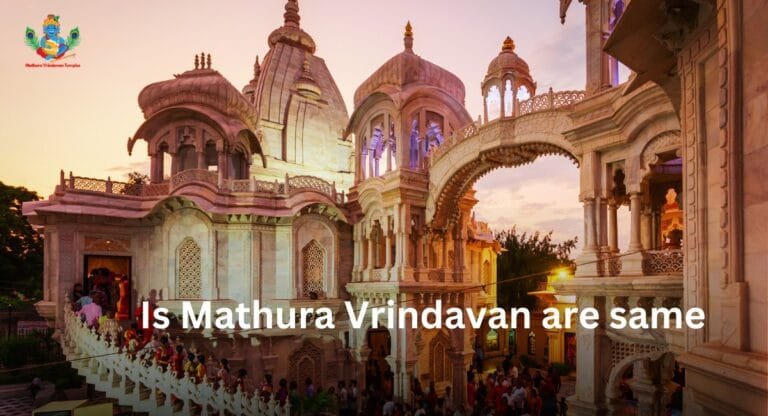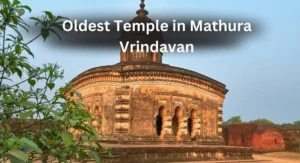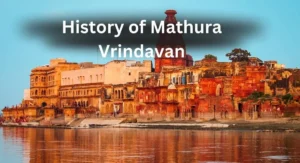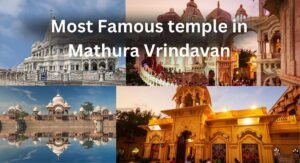Nestled in the vibrant state of Uttar Pradesh, India, Mathura and Vrindavan are two names that echo with the divine presence of Lord Krishna. For devotees, travelers, and curious souls alike, these towns are more than just dots on a map—they’re living chapters of a timeless story. But a question often lingers: Is Mathura and Vrindavan the same? At first glance, their closeness and shared connection to Krishna might suggest they’re one entity. Yet, as we unravel their spiritual, cultural, and geographical threads, it becomes clear that they are distinct, yet beautifully intertwined. Let’s embark on this journey to understand what sets them apart and why they’re so often spoken of together.
Table of Contents
ToggleThe Heart of the Matter: Krishna’s Tale in Two Towns
To answer whether Mathura and Vrindavan are the same, we need to step into the world of Hindu mythology, where Lord Krishna’s life unfolds like a divine melody.
- Mathura: The Birthplace of a God
Mathura is where it all began. This ancient city is revered as the birthplace of Krishna, born to Devaki and Vasudeva in a humble prison cell under the oppressive rule of King Kansa. The Krishna Janmabhoomi Temple marks this sacred spot, a beacon for pilgrims seeking to connect with the moment divinity touched the earth. Mathura is a city alive with history, its streets buzzing with tales of Krishna’s miraculous escape from Kansa’s clutches. - Vrindavan: The Playground of Love
Just a short distance away lies Vrindavan, the enchanting land where Krishna grew up. Here, he danced with the gopis, played his flute by the Yamuna River, and lifted the Govardhan Hill to protect his people. Vrindavan is a tapestry of devotion, woven with temples like the Banke Bihari Temple and Prem Mandir, where the air hums with chants of “Radhe Radhe.” It’s Krishna’s playground, a place frozen in the joy of his childhood.
So, are they the same? Not quite. Mathura cradles Krishna’s birth, while Vrindavan celebrates his youth. They’re distinct chapters of the same divine story, each with its own flavor and significance.
A Stone’s Throw Apart: The Geography of Mathura and Vrindavan
One reason people ask, “Is Mathura and Vrindavan the same?” is how close they are to each other. Separated by just 10 kilometers, these towns feel like neighbors holding hands across a narrow lane.
- Distance and Travel: A quick 20-30 minute ride by auto-rickshaw or taxi bridges the gap between them. The fare? A modest INR 20 to INR 300, depending on your choice of transport.
- The Yamuna’s Embrace: The Yamuna River flows through both, tying them together like a silver thread. It’s as if nature itself refuses to let them drift too far apart.
- Different Vibes: Mathura is a bustling city, blending urban life with spiritual roots. Vrindavan, on the other hand, feels like a serene village, its lanes lined with temples and ashrams.
Their proximity often blurs the lines, but they’re separate entities—Mathura a city, Vrindavan a devotional haven. They’re not the same, but they’re close enough to explore in one soul-stirring trip.
Distinct Yet Divine: Cultural and Spiritual Nuances
While both towns pulse with Krishna’s presence, their atmospheres and offerings are uniquely their own. Here’s how they differ:
Mathura: The City of Beginnings
- Ambiance: Mathura feels alive with history and energy. It’s a place where ancient temples stand alongside busy markets, and the past meets the present.
- Must-See Spots:
- Krishna Janmabhoomi Temple: The heart of Mathura, where Krishna was born.
- Dwarkadhish Temple: A stunning tribute to Krishna’s royal legacy.
- Vishram Ghat: A peaceful riverside spot where Krishna is said to have rested.
- Festivals: Krishna Janmashtami here is magical—midnight prayers, processions, and a city bathed in devotion.

Vrindavan: The Land of Leelas
- Ambiance: Vrindavan is quieter, almost timeless. It’s a place where every corner feels steeped in Krishna’s playful spirit.
- Must-See Spots:
- Banke Bihari Temple: A lively shrine buzzing with devotion.
- Radha Raman Temple: A gem of simplicity and grace.
- ISKCON Temple: A modern hub of Krishna consciousness.
- Festivals: Holi in Vrindavan is legendary, with colors and chants celebrating Krishna’s love for Radha.
In Mathura, you feel the weight of Krishna’s divine origin. In Vrindavan, you’re swept into his joyful antics. They’re not the same, but together, they complete the picture of his life.
Why the Confusion?
If Mathura and Vrindavan are distinct, why do people often think they’re the same? Here’s why the lines get blurry:
- So Close, Yet So Different: That 10-kilometer gap is tiny, making them feel like one big spiritual zone.
- Krishna’s Thread: Scriptures and stories weave them together, rarely mentioning one without the other.
- Travel Bundles: Tour packages often market them as a single pilgrimage, smoothing over their differences.
- Shared Soul: The traditions, songs, and devotion in both towns feel like echoes of the same heartbeat.
But once you visit, the distinction shines through. Mathura is the root, Vrindavan the bloom—separate, yet part of the same tree.
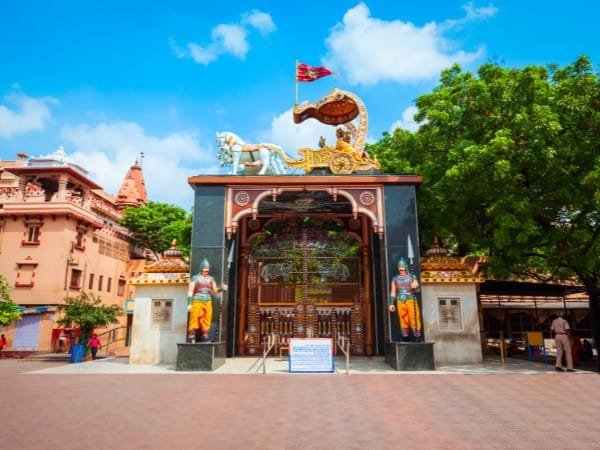
Exploring Both: A Practical Guide
Since they’re so close, why choose between them? A trip to both Mathura and Vrindavan is the perfect way to experience Krishna’s legacy. Here’s how to plan it:
- How Long?: Spend 2-3 days to soak in the essence of both towns without rushing.
- Where to Stay?: Base yourself in Mathura for convenience—options range from cozy guesthouses to comfortable hotels.
- Getting Around: Hop between them with auto-rickshaws, taxis, or even a guided tour for deeper insights.
- Top Picks:
- In Mathura: Krishna Janmabhoomi, Vishram Ghat, Dwarkadhish Temple.
- In Vrindavan: Banke Bihari, Prem Mandir, Seva Kunj.
For a detailed itinerary and insider tips, visit our website, Mathura Vrindavan Temples. It’s your companion for navigating these sacred lands.
Two Towns, One Spirit
So, is Mathura and Vrindavan the same? No, they’re not. Mathura is the birthplace, steeped in history and reverence. Vrindavan is the playground, alive with love and playfulness. Yet, their connection is unbreakable—two halves of Krishna’s divine journey. Visiting one without the other feels like reading half a story. Together, they offer a complete glimpse into the life of a god who was both human and eternal.
Whether you’re drawn by faith, curiosity, or the call of travel, Mathura and Vrindavan welcome you with open arms. Dive into their magic, and let their differences enrich your soul. For more on this sacred duo, check out Mathura Vrindavan Temples.

